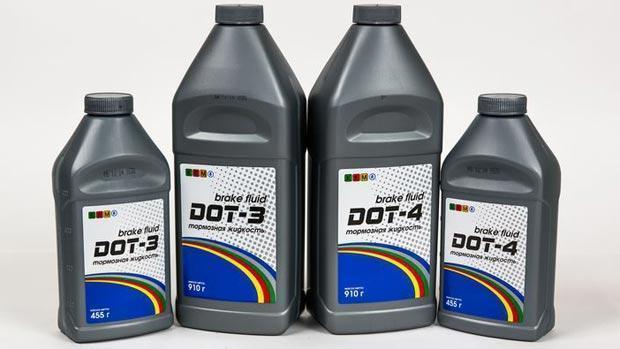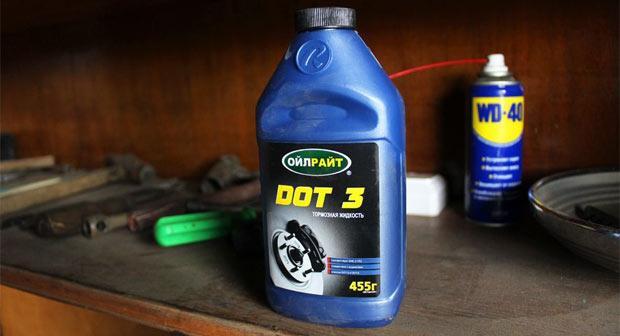
Can dot 3 and dot 4 brake fluid be mixed?
What is the difference between DOT-3 and DOT-4 brake fluids?
Both considered brake fluids are made on the same basis: glycols. Glycols are alcohols with two hydroxyl groups. This determines their high ability to mix with water without precipitation.
Let's take a look at the main operational differences.
- Boiling temperature. Perhaps, in terms of security, this is the most significant indicator. You can often find such a misconception on the network: brake fluid is not able to boil, since in principle there are no such hot sources of heating in the system. And the discs and drums are at a fairly large distance from the calipers and cylinders in order to transfer the temperature to the liquid volume. At the same time, they are also ventilated by passing air flows. In fact, heating is caused not only by external sources. During active braking, the brake fluid is compressed with tremendous pressure. This factor also affects the heating (an analogy can be drawn with the heating of volumetric hydraulics during intensive work). The liquid DOT-3 has a boiling point of +205°C. DOT-4 has a slightly higher boiling point: +230°C. That is, DOT-4 is more resistant to heating.


- Drop in boiling point when humidified. The DOT-3 liquid will boil after the accumulation of 3,5% moisture in a volume at a temperature of +140°C. DOT-4 is more stable in this regard. And with the same proportion of moisture, it will boil no earlier than after passing the mark of + 155 ° С
- Viscosity at -40°C. This indicator for all liquids is set by the current standard at a level not higher than 1800 cSt. Kinematic viscosity affects low temperature properties. The thicker the liquid, the more difficult it is for the system to work at low temperatures. DOT-3 has a low-temperature viscosity of 1500 cSt. DOT-4 liquid is thicker, and at –40°С it has a viscosity of about 1800 cSt.
It is noted that due to hydrophobic additives, DOT-4 liquid absorbs water from the environment more slowly, that is, it lasts a little longer.


Can DOT-3 and DOT-4 be mixed?
Here we consider the compatibility of the chemical composition of liquids. Without going into details, we can say this: both liquids in question are 98% glycols. The remaining 2% comes from additives. And of these 2% of the common components, at least half. That is, the difference in the actual chemical composition does not exceed 1%. The composition of the additives is thought out in such a way that the components do not enter into dangerous chemical reactions, which may result in a decrease in the performance of the fluid.
Based on the foregoing, we can draw an unambiguous conclusion: you can safely pour DOT-4 into a system designed for DOT-3.


However, DOT-3 liquid is more aggressive to rubber and plastic parts. Therefore, it is undesirable to pour it into unadapted systems. In the long term, this can reduce the life of the brake system components. In this case, there will be no drastic consequences. A mixture of DOT-3 and DOT-4 will not drop in performance properties lower than the smallest of the indicators among these two liquids.
Also pay attention to fluid compatibility with ABS. It has been verified that DOT-3, which is not designed to work with ABS, will work with an anti-lock braking system. But the likelihood of failures and leakage through the seals of the valve block will increase.


Watch this video on YouTube
